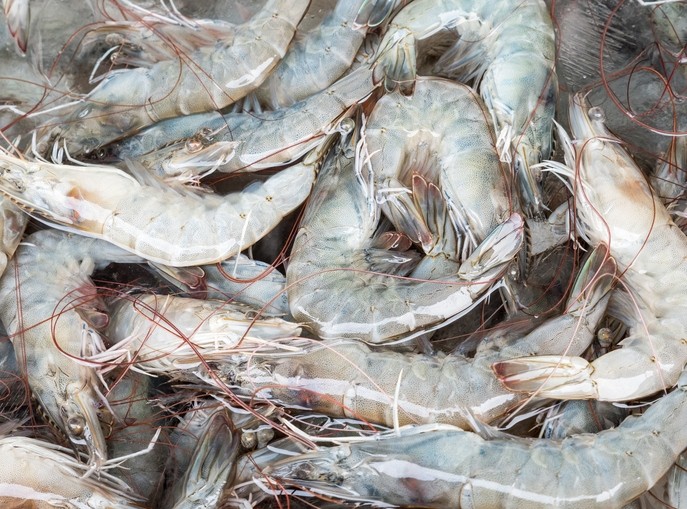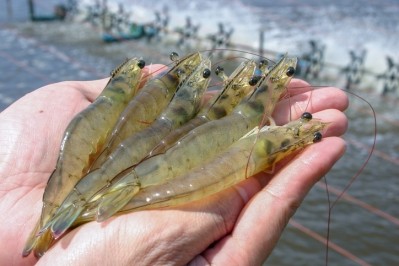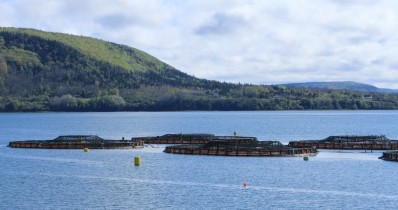Origin of probiotics and efficacy of strains explored in shrimp focused study

An international team of researchers from Mexico, Australia and Iran examined the use of commercial and indigenous probiotics in shrimp production. The group tracked probiotic efficacy and influence on shrimp growth performance, resistance to stressors and immuno-physiological variables to assess the merits of indigenous or commercially generated probiotic supplements.
“As there is no data available, therefore, this study was aimed to investigate the influence of commercial and indigenous probiotic sources of these two mentioned Bacillus species on the growth performance, immunophysiological variables, and stress tolerance in white shrimp, L. vannamei,” the researchers said.
The researchers found that growth and feed parameters were influenced by all four probiotic strains – commercial or indigenous – when compared to shrimp on the control diet. However, results for some factors including growth, final weight and response to stressors were best for shrimp getting the commercial probiotics.
“Results of this work clearly show that application of two Bacillus bacteria, B. subtilis and B. lichenformis as the commercial products provided a superior efficacy and potency on growth and immunophysiology of L. vannamei compared with the same species of these Bacillus bacteria but with an indigenous source,” they said. “Also, administration of a mixture of commercial and indigenous sources of these Bacillus species in shrimps provided better growth condition and immune responses than the indigenous Bacillus alone.”
The results indicate that more work is needed to better understand the cause of such differences, they said. However, it also suggests that attention has to be given to the source of probiotics.
Members of the research team published their work in the journal Aquaculture.
Why seek new probiotics?
Shrimp farming is a valuable part of the aquaculture industry and has become an important source of available protein in the past few years, the researchers said. However, as shrimp production has increased, disease and environmental problems have been a factor.
Disease outbreak is still a limiting factor for the production industry, and ways to prevent outbreaks are a high priority, they said. But use of chemicals and antimicrobial products has been linked to environmental damage and the growth of antimicrobial resistant bacteria.
Alternatives like probiotic supplements are being explored to control infectious diseases for shrimp producers, they said. Bacillus species have been good candidates for probiotic use.
“These Gram-positive, spore-forming bacteria have been used to enhance the growth, health status, disease resistance as well as water quality parameters of some cultured species of fish and shellfish including shrimp with mostly promising result,” the researchers said. “Use of commercial Bacillus subtilis and Bacillus licheniformis as probiotics either in a single form or in the combination manner has raised a promising hope for aquaculture species including shrimp.”
However, there are questions remaining regarding the difference in efficacy and potency of indigenous and commercial probiotic supplements when used to support growth and health for shrimp, they said.
“The hypothesis is that an indigenous probiotic may provide a better efficacy on growth and health condition of the target animal than commercial one as it is less manipulated under laboratory condition or production process,” they said. “In contrast, a commercial probiotic could be more effective than the indigenous one because the commercial strains are selective in their characteristics e.g. levels of enzyme products, survival in the gastro-intestinal environment, ability to withstand low pH and high concentrations of bile acids and other desirable characteristics.”
Methods and materials
In the feeding trial, 600 shrimp were given one of four diets for a period of 60 days, the researchers said. The diets included a control with no probiotic, a diet supplemented with two commercial probiotics (CP), a diet with both commercial and indigenous probiotics all in the same amount (CIP) or a diet with only the two indigenous probiotic strains.
Indigenous probiotics where isolated from the gut of shrimp fingerlings, they added.
Shrimp were assessed for growth, final weight (FW), specific growth rate (SGR), survival and feed conversion ratio (FCR), the researchers said. They also were checked for density of Bacillus in the gut, enzyme activity and for immunological variables.
At the end of the feeding trial, a sample of shrimp was exposed to stress tests including high and low salinities, formalin, chlorine, changes in water temperature and ammonia, they said.
Results
Overall, the shrimp getting diets supplemented with a probiotic outperformed those on the control diet, the researchers said.
Final weight, SGR, and FCR were all better for shrimp getting a diet with probiotic supplement and glucose and cortisol values were lower, they said. However, those on the CP diet and CIP saw better growth performance than shrimp getting the IP diet, except for FCR which was better for shrimp on the IP diet.
Shrimp on the CP diet had the highest survival rate, while those on the control diet had the lowest, they said.
“There are some differences in efficacy and potency between the commercial and indigenous probiotic sources in growth and health condition of L. vannamei, and thus requires further attention and research works,” the researchers said.
Shrimp receiving the CP diet had slightly higher values for albumin, total protein and lysozyme, when compared to shrimp on the other supplemented diets, they said. Total haemocyte count (THC), semi-granular cells (SGC), large granular cells (LGC), hyaline cells (HC) also were higher for shrimp on the CP diet.
The amount of Bacillus in the gut was highest for shrimp on the CP diet, they said. However, the CIP group had a larger amount of bacillus than the shrimp on the IP diet.
Shrimp on the supplemented diets all had lower amounts of alanine aminotransferase (ALT) and aminotransferase (AST), they said.
“The stress resistance in all treated shrimps were mostly significantly higher than control shrimps,” the researchers said. “Also, shrimps fed with CP probiotics demonstrated significantly a better resistance to the stressors than shrimps fed IP probiotics.”
Source: Aquaculture
Title: Efficacy of two commercial and indigenous probiotics, Bacillus subtilis and Bacillus licheniformis on growth performance, immuno-physiology and resistance response of juvenile white shrimp (Litopenaeus vannamei)
Authors: D Abdollahi-Arpanahi, E Soltani, H Jafaryan, M Soltani, M Naderi-Samani, A Campa-Córdova
DOI: doi.org/10.1016/j.aquaculture.2018.06.082















